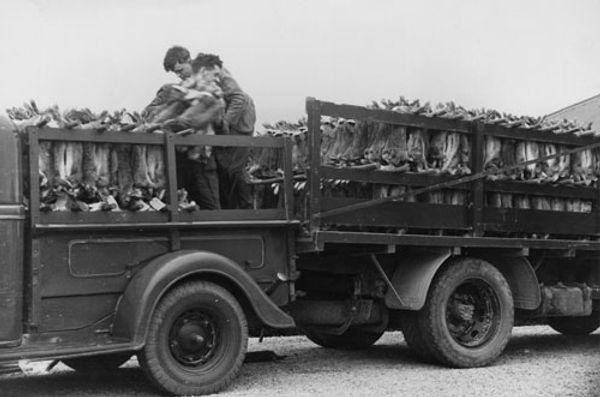Ranfurly
Waipiata
Wedderburn
Oturehua
Lauder
“Breeding Like Rabbits”
The rabbit population exploded in the 1870s and the erection and maintenance of rabbit proof fencing and rabbit control became an important task for runholders and farmers.
The transport of rabbit carcasses was big business for the railway. Wagon loads were sent to the freezing works at Burnside or Port Chalmers, Dunedin and were attached to any departing trains. Rabbit skins, plus frozen and canned rabbit meat became exports of national importance. In 1877, Otago exported 1 million rabbit skins – 3 million in 1883.
Hordes of rabbits reduced the food available to stock, first by eating the pasture and then by digging up and eating the grass roots.
There were regular rabbit drives to keep the rabbit population down. Children and adults of the town would yell and bang and drive the rabbits into nets where they were then killed and skinned.
Warning! Some viewers may find this video disturbing and has images of rabbits being beaten. Parental or adult guidance is advised.

Marlborough Rabbit Trapping and Meat Export Company. Curried rabbit, Auckland, S Kirkpatrick & Co, c. 1900.
Eph-F-MEAT-Gear-130, Photolithographs, Printed Ephemera Collection, Alexander Turnbull Library




